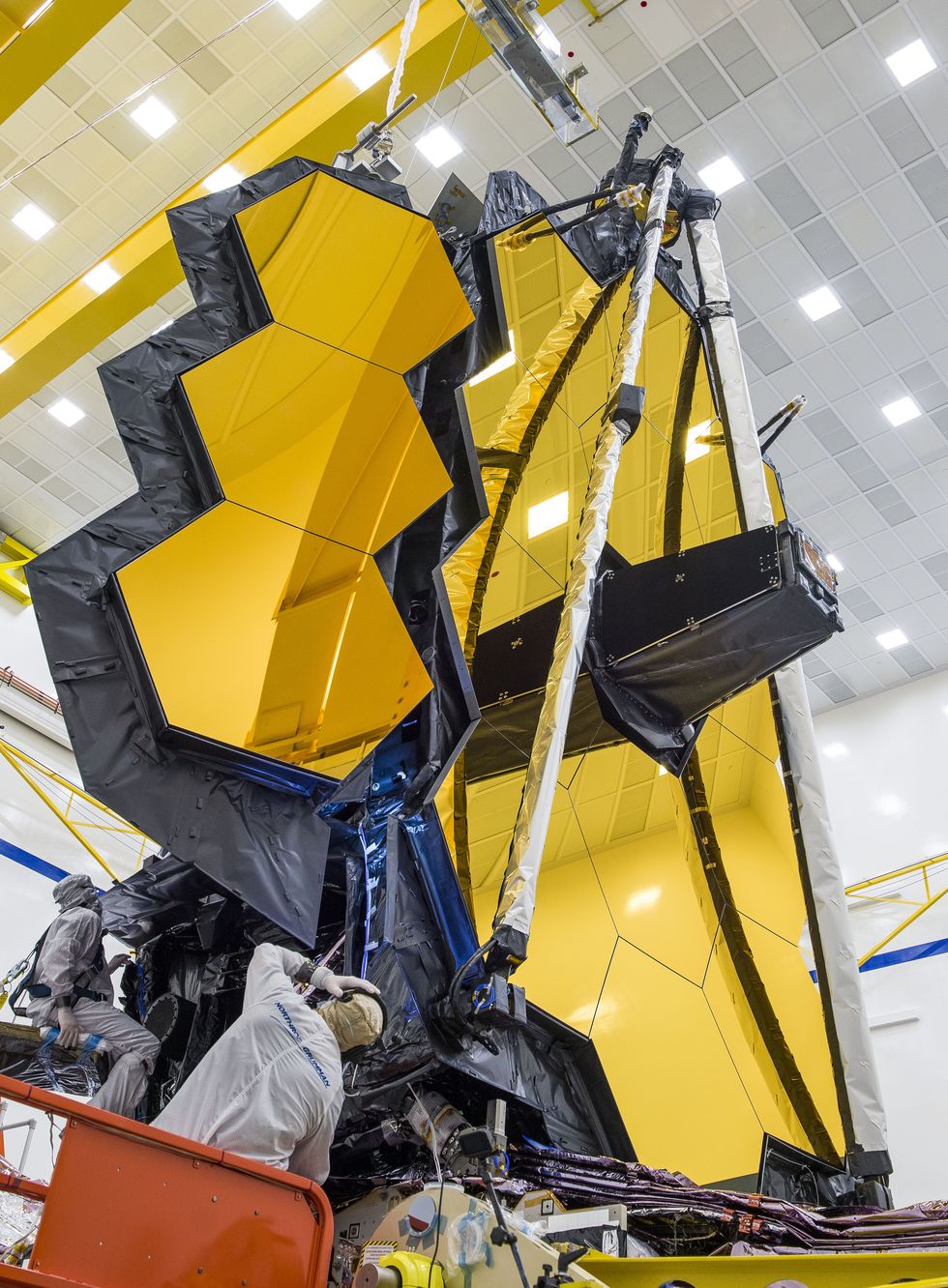
Apr 02, 2020
1 min, 42 secs
James Webb Space Telescope has successfully completed a critical test run, unfurling its folded mirror into the same configuration it will achieve in space. The test was conducted in early March at Northrop Grumman's Redondo Beach, Calif., facility. The telescope is set to launch in 2021. The James Webb Space Telescope, set to launch in 2021, just aced a critical dress rehearsal.
In early March, technicians at Northrop Grumman Space Systems' offices in Redondo Beach, California, conducted a dry run of this intricate process. They booted up the telescope's internal electronic system, which instructed the mirror to open into its final space configuration. (Here on Earth, tethers offset the weight of the mirror, which will be weightless in orbit.)
“Deploying both wings of the telescope while part of the fully assembled observatory is another significant milestone showing Webb will deploy properly in space. This is a great achievement and an inspiring image for the entire team,” Webb's optical telescope element manager Lee Feinberg of NASA’s Goddard Space Flight Center said in a statement.
The telescope's primary mirror, composed of 18 4.2-foot-long hexagonal mirrors, is just over 21 feet long. In order to launch aboard an Ariane 5 rocket, the telescope is folded into three parts. Once released into orbit, the telescope will unfurl and begin its journey charting the universe.
Its gold-plated mirrors will reflect infrared light into a smaller mirror which must also be deployed once the telescope is in orbit. That mirror will then rebound light into a tiny pinhole where it will be captured by the cameras. A sunshade the size of a tennis court will passively cool and protect the mirrors from excessive sunlight so that it can operate safely.
James Webb is set to launch from French Guiana in 2021. The telescope still needs to undergo a number of environmental tests and integration before it is sent into orbit. The spread of the novel coronavirus, however, has impacted work on the telescope. Northrop Grumman's team is currently working limited shifts, with fewer workers to complete the telescope's integration and testing.
